The content of the article
- 1 Botanical Description
- 2 Beneficial features
- 3 Contraindications
- 4 Where is yarrow grass used?
- 5 How to collect and prepare a plant?
- 6 How to apply yarrow?
- 7 Use in gynecological practice
- 8 Diarrhea
- 9 Cystitis
- 10 Yarrow combined with tansy in the form of syrup
- 11 Hemorrhoids
- 12 Pancreatitis
- 13 Liver, kidney, gall bladder
- 14 Bones and joints
- 15 Yarrow for the skin
- 16 Video: the healing properties of yarrow
As soon as summer comes, along roadsides, on ravine slopes, glades, you can meet plants with dense snow-white flowers. This is the yarrow. On the one hand, a plant cannot be weed, but on the other, it is so unpretentious that it is in no way inferior to weeds in this quality.
The plant is widely known and attracts attention due to its pronounced therapeutic effect. For this, it fell into the group of medicinal plants. Yarrow has gained its fame since the days of the ancient healers of Hippocrates and Paracelsus. In those days, it was believed that they could perfectly treat sore throats and colds. He was treated and wounds. For this, fresh leaves were used, which were previously ground in a mortar. Powder wounds were also carried out with crushed dry leaves of the plant. Grass has far from the only name. In different places it is called in its own way. For example, in the Kostroma province he was given the name cutter, and in the Nizhny Novgorod region he is called the bloody.
Botanical Description
The plant has dense inflorescences with a white-cream tint. The yarrow stalk is characterized by elasticity and density. Foliage with a dark green tint with a characteristic astringent smell. According to these qualities, the plant can be easily distinguished from other representatives of the herbal medicinal kingdom. By the presence of an umbrella, the plant can be seen from afar. Due to the stiffness of the stem, in order to pick a plant, it will take some effort. But tearing the plant out with the root will be easy.
Beneficial features
This plant is very difficult in nature. Nature laid a certain share of cunning in him. For example, to give a botanical description of it, quite a few terms are required. From a chemical point of view, the glands that are on the leaves and inflorescences are of interest. The attached cuticle is a container of essential oil. Its inflorescences contain 10 times more oil than leaves.
Stems and leaves can be used to produce plant juice. Under his influence, blood begins to clot better. In this regard, its activity is higher than that of many drugs obtained synthetically. The plant can be safely represented as a source of vitamin K. It determines the manifestation of such an action.
The composition of the plant is 40% chamazulene. Essential oil contains a lot of proazulene and glycosides. The main effect of yarrow is associated with a bactericidal effect. It is provided by the content of choline. The plant is used for therapeutic correction of the following conditions:
- Hemorrhages of various origins.
- It is used as a means of normalizing metabolism.
- It is able to eliminate inflammation and heal wounds, including purulent wound surfaces.
- The plant is able to enhance the outflow of bile.
- It is an effective tool in the presence of hypoacid gastritis in the anamnesis.
- Yarrow will help with calculi in the kidneys.
- Ulcerative processes from the digestive tract can be stopped with the help of yarrow.
- The plant is an indispensable component in the fees for the treatment of the stomach and increase appetite.
- Grass is used for cosmetic purposes.
Important! You should never forget about compliance with the dosage when applying.
Contraindications
The use of the plant is undeniable. But, unfortunately, it is not without limitations for its application. You can not take it in the following situations:
- Pregnancy.
- Hypotension.
- Limited use for people with increased blood coagulation.
Where is yarrow grass used?
It can be found in various fees to correct problems associated with the stomach. Use it as a bitterness if necessary to increase appetite. This remedy can fight malaria. Yarrow will be useful to nursing mothers during lactation. Inflorescences of the plant have found their application in dermatology and cosmetology.
According to chronicles in Russia, yarrow healed gunshot wounds and stopped bleeding.
How to collect and prepare a plant?
The plant is ubiquitous. He is distinguished by extreme unpretentiousness, but he does not tolerate the shadow well. As a medicinal raw material, leaves, stem and tops of inflorescences are collected. Harvest begins at a time when the plant began to bloom. It is better to carry out the harvesting in the morning in dry calm weather. You need to start when the dew has already descended. The plant is cut with the formation of bundles from them.
For drying, shady, well-ventilated places are used. The best place is the attic. After drying, the plant is stored in paper or fabric (but not cellophane) bags. Storage is allowed for two years.
How to apply yarrow?
Previously, peasants knew well how to brew yarrow and treat various diseases.
- Cooking tincture. The basis for the preparation is alcohol or vodka. It is necessary to measure 5 tablespoons of medicinal raw materials. To it is added vodka in a volume of 100 ml. The container must be closed well so that air does not enter it. After this 10 days, the composition should be in the dark. Tincture is taken for hemorrhages. Do this several times a day in a volume of 30 drops.
- We are treated with broth. For the broth, the coarse parts of the plant are suitable. At the same time, boiling is carried out for a long time. Medicinal raw materials in the amount of two teaspoons are poured with a glass of boiling water. Exposure to boiling is 20 minutes. Reception is carried out 4 times during the day.
- Infusion. For its preparation, a thermos is quite suitable. Large volumes should not be cooked, since the healing properties after cooking are preserved only for no more than 10 hours. In a thermos, grass is poured in the amount of two teaspoons and poured with boiling water in a volume of 300 ml. A single dose is not more than 70 ml, but this is done several times a day. The tool is indicated for problems with the biliary tract and gall bladder. Its use is effective if there are various bleeding.
- Cooking ointments. If cooking is done in summer, then a fresh plant is used. A handful of inflorescences along with the leaves must be thinned. Then any animal fat is added to them. The proportion is 2: 1. If the ointment is prepared in the winter, then dry grass is used. It must be crushed and mixed with petroleum jelly in a ratio of 1: 4. The effect can be enhanced by adding a few tablets of streptocide, previously crushed.
- Lotions. They are used for external use. To four tablespoons of powder prepared by grinding dry grass, boiling water is added in a volume of 400 ml.
Use in gynecological practice
You can apply the infusion in the presence of processes associated with cervical erosion. It is used as tea. During the day, a liter of infusion is drunk. Reception is carried out by the course, which is 14-21 days.
In parallel with this, douching procedures are carried out with those herbs that have an anti-inflammatory effect (chamomile, calendula, other medicinal representatives).
The use of tea prepared on the basis of yarrow will alleviate pain during the menstrual cycle. If the genitourinary sphere suffers, then the juice of the plant is used. You can add honey to it.
Diarrhea
It can be caused not only by the action of microflora, but also arise for a number of other reasons. For example, severe stress can cause intestinal upset and cause diarrhea. In this case, the yarrow will come to the rescue. The tool is easy to prepare. A teaspoon of dry grass is added to a glass of boiling water. You need to drink until the condition improves. It can also be given to the child if vomiting occurs. But it should not be accompanied by temperature.
Cystitis
Herbal medicine for cystitis has no contraindications, unlike correction with synthetic agents. In this case, an infusion is administered. The treatment lasts two weeks. At one time, no more than 50 ml is used.
Yarrow combined with tansy in the form of syrup
These two plants reinforce each other's actions, acting in this case as synergists. Each herb must be taken in two glasses. After water is poured into the grass, the composition is left for 24 hours. He must insist. Then it is put on fire and brought to a boil. After 5 hours, it should boil over the fire again. After that, the composition is filtered. The grass is carefully wrung out. Before use, add honey. For one liter of broth, two tablespoons of honey is enough. The composition is subject to storage in cold conditions. Take 25 ml in the morning and evening before bedtime. This amount should be enough for a full course of treatment. And he is three weeks.
This tool will provide good support for problems with the kidneys and liver, pancreas and stomach. Intoxication, pain disappears. In some cases, it is used even for cirrhosis.
Hemorrhoids
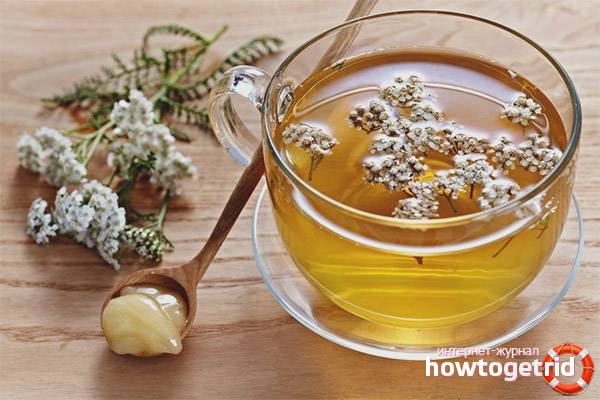
Tea with yarrow can be used not only for treatment, but also for the prevention of hemorrhoid cones. To two tablespoons of grass is added half a liter of water. Mint is optionally added.
Pancreatitis
With it, a special collection is used, which includes grass of yarrow, chamomile and St. John's wort. Each ingredient is taken in equal amounts. To the finished mixture is added boiling water in a volume of 250 ml. A intake of 100 ml before meals is indicated.
Liver, kidney, gall bladder
A complex collection of 6 components is used. For his medicine in equal amounts, the following components are taken:
- Yarrow grass.
- Knotweed.
- Part of the corn stigmas.
- Dog-rose fruit.
- Leaves of plantain.
- Immortelle grass.
All components must be thoroughly mixed and poured with boiling water. This is done at night. By morning, the product will be ready for use. Drink half a glass at a time. This is done at regular intervals three times throughout the day. Reception should not exceed three months. To give the collection a better taste, you can add mint or rose petals to it.
In order to improve the outflow of bile, the yarrow should be mixed with immortelle grass and rhubarb root. The proportion is 5: 3: 2. A spoonful of the mixture is brewed with boiling water in the volume of one glass. This volume is enough for the whole day. Reception is carried out no earlier than 2 hours after a meal.
Persons with increased secretion may be overcome by burping. A collection consisting of yarrow, St. John's wort and dill seeds can help eliminate this symptom. The mixing ratio is 8: 8: 1. A glass of boiling water is enough for a collection spoon. The entire volume is divided into parts and used throughout the day.
Fact! Colds can cause an enlarged spleen. Yarrow and calendula will help to cope with this phenomenon.
Bones and joints
A course of yarrow infusion over 10 days will help get rid of osteoporosis. You can add infusion to the bath. The exposure is 20 minutes. If there are manifestations of bursitis, then yarrow in combination with St. John's wort and burdock will come to the rescue. It is necessary to take an equal volume of all components and pour them with boiling water in the amount of one glass. It is necessary to insist half an hour. After that, the liquid part is drained and diluted with water in a ratio of 1: 1. The duration of treatment is 12 days per tablespoon three times / day.
Yarrow for the skin
- Baths with a plant will relieve skin itching. If you add a calendula, then you can correct the manifestations associated with neurodermatitis.
- Save yarrow from eczema. The infusion is rubbed into the affected areas of the skin.
When treating with yarrow, always observing the dosage and taking into account the presence of contraindications.
Video: the healing properties of yarrow

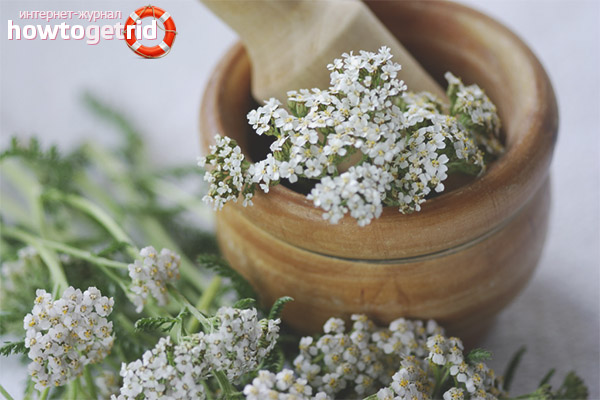
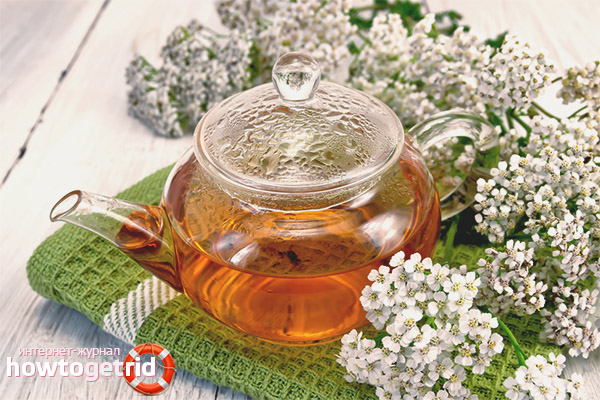
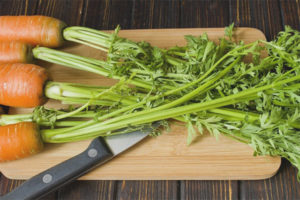
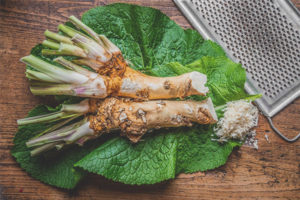
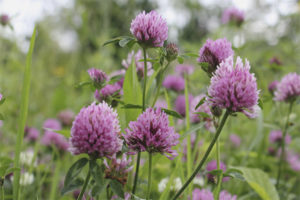
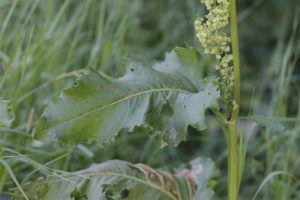
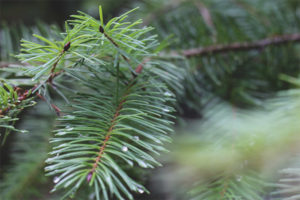
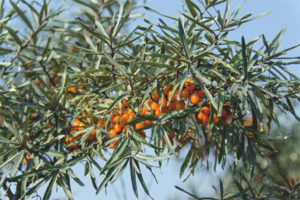
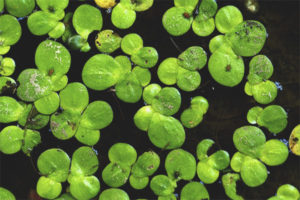
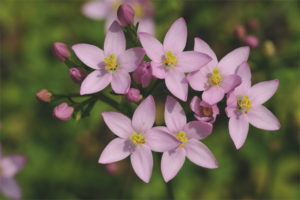
Submit